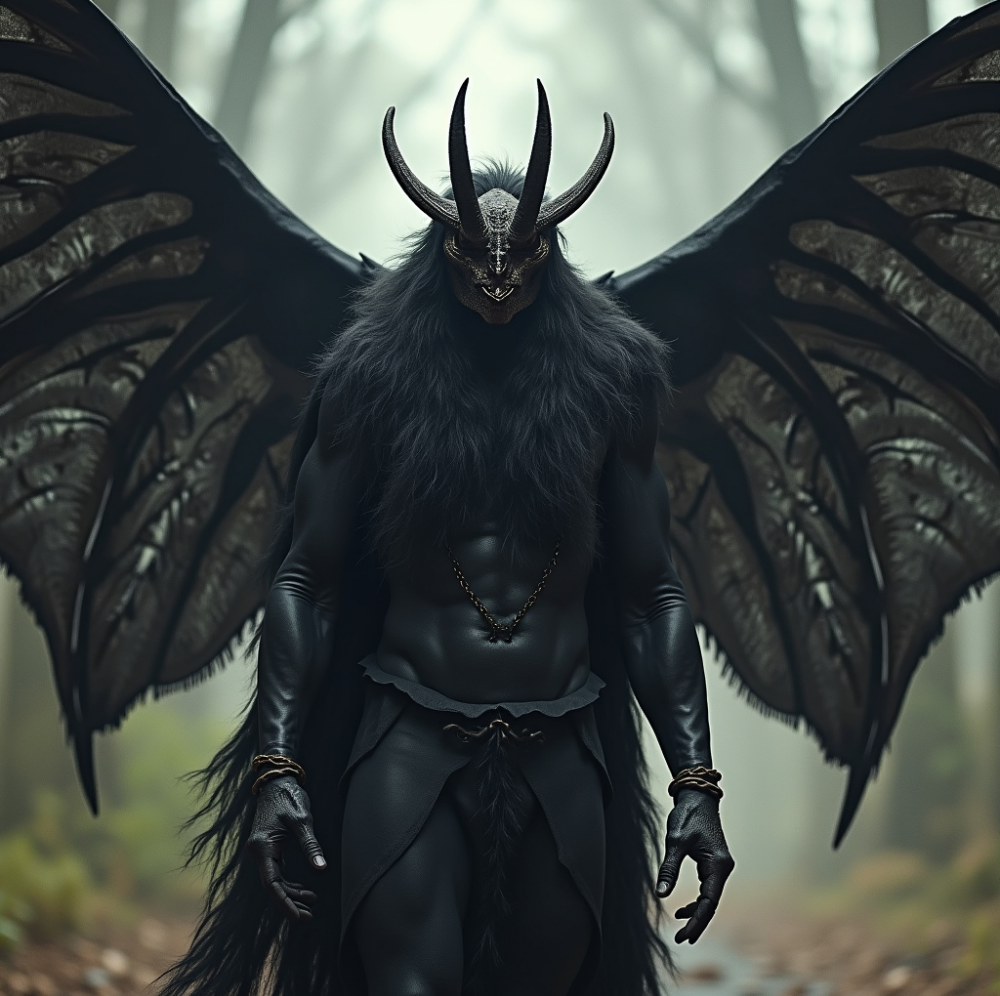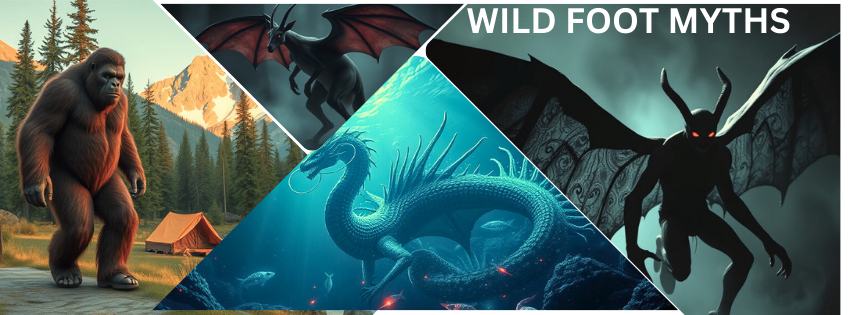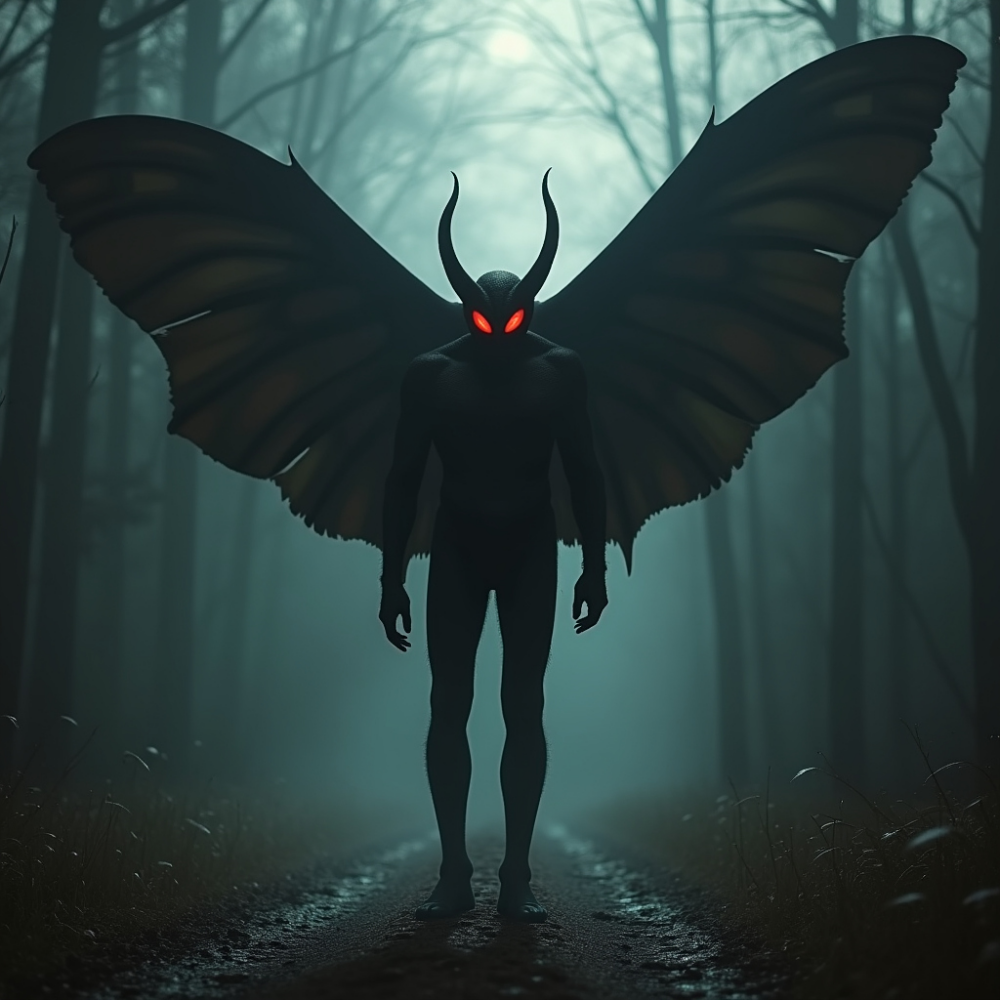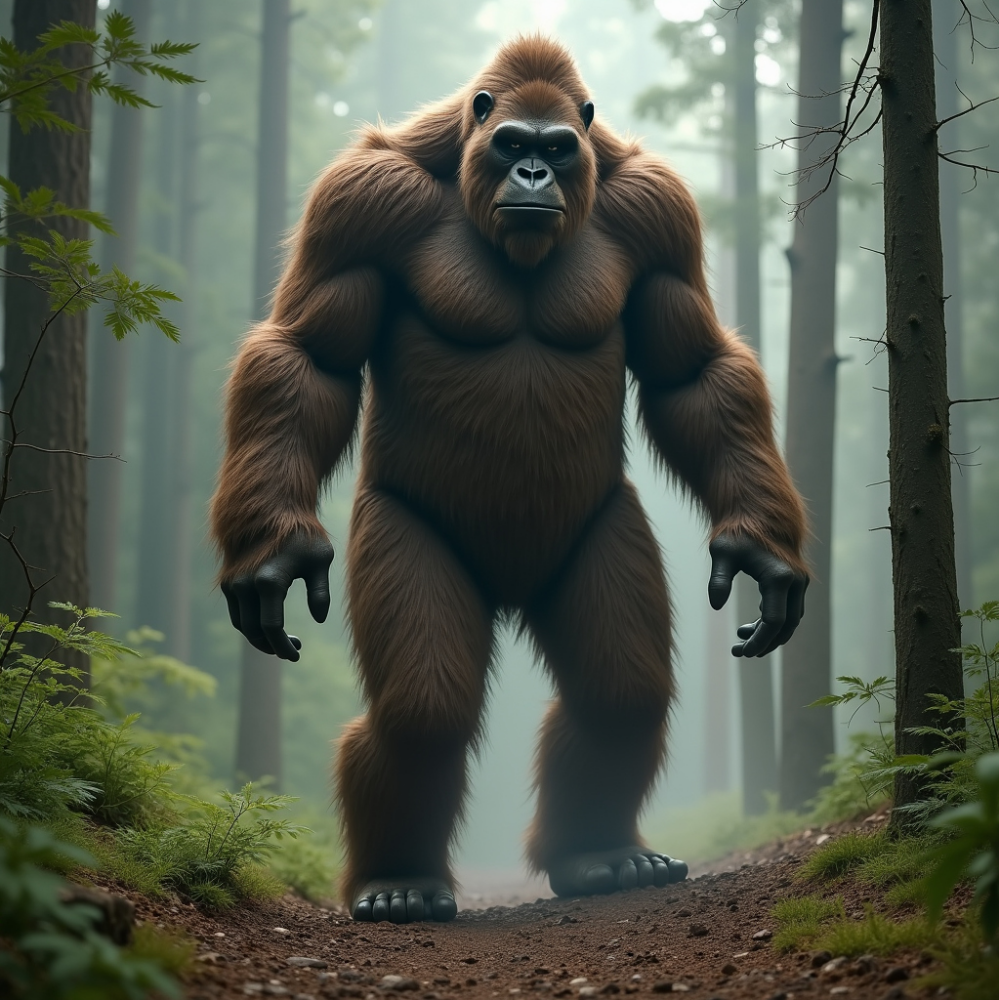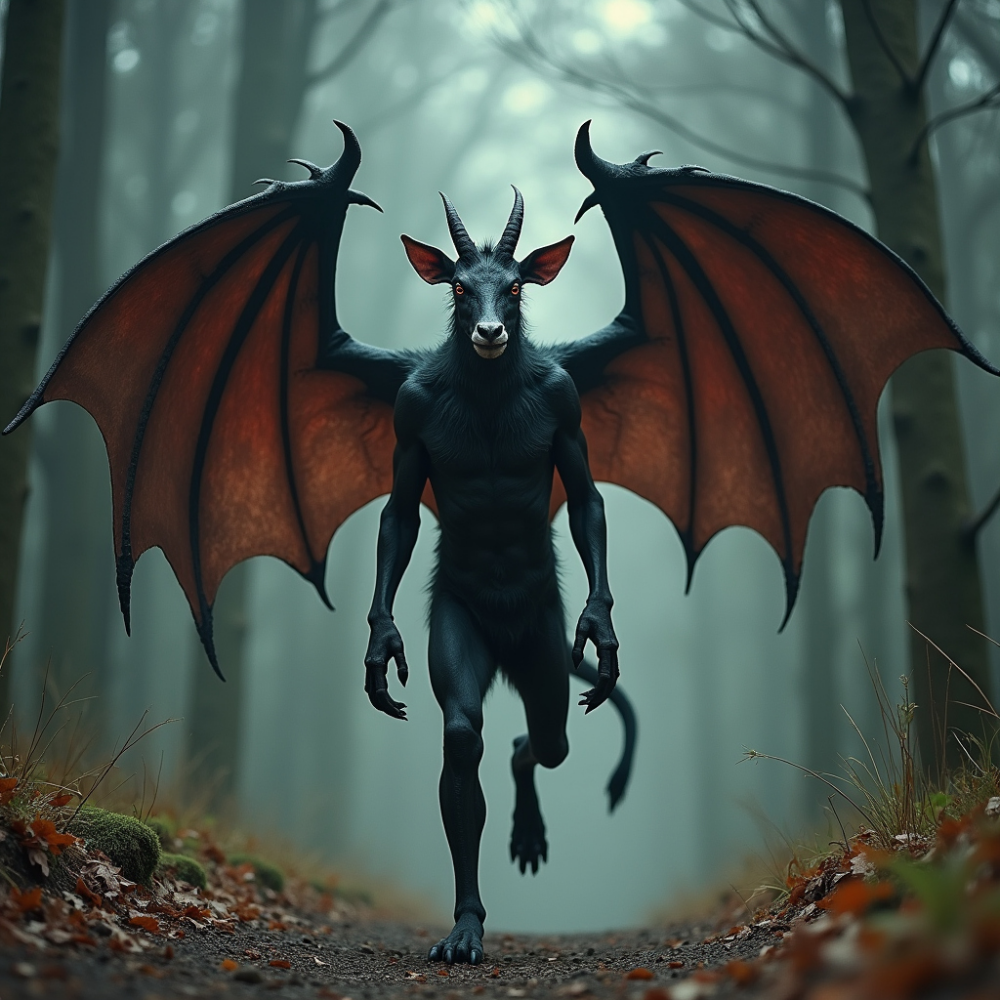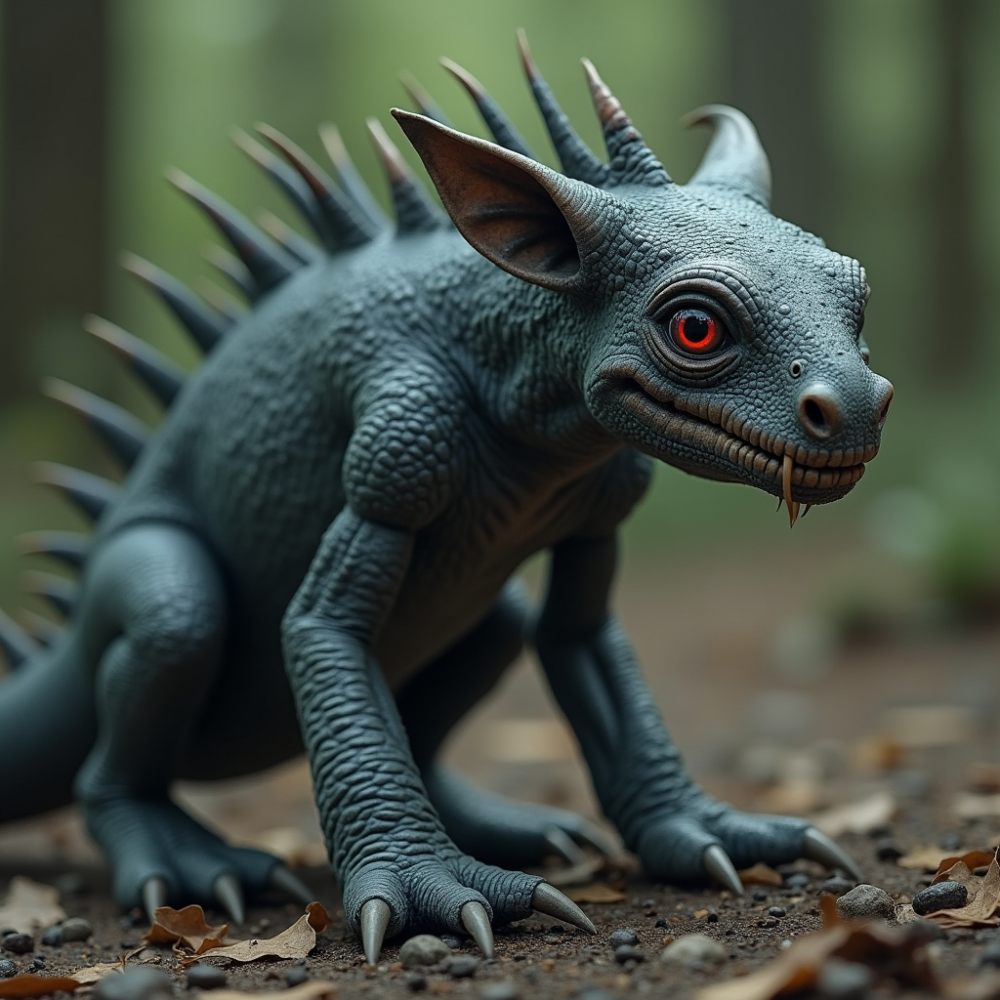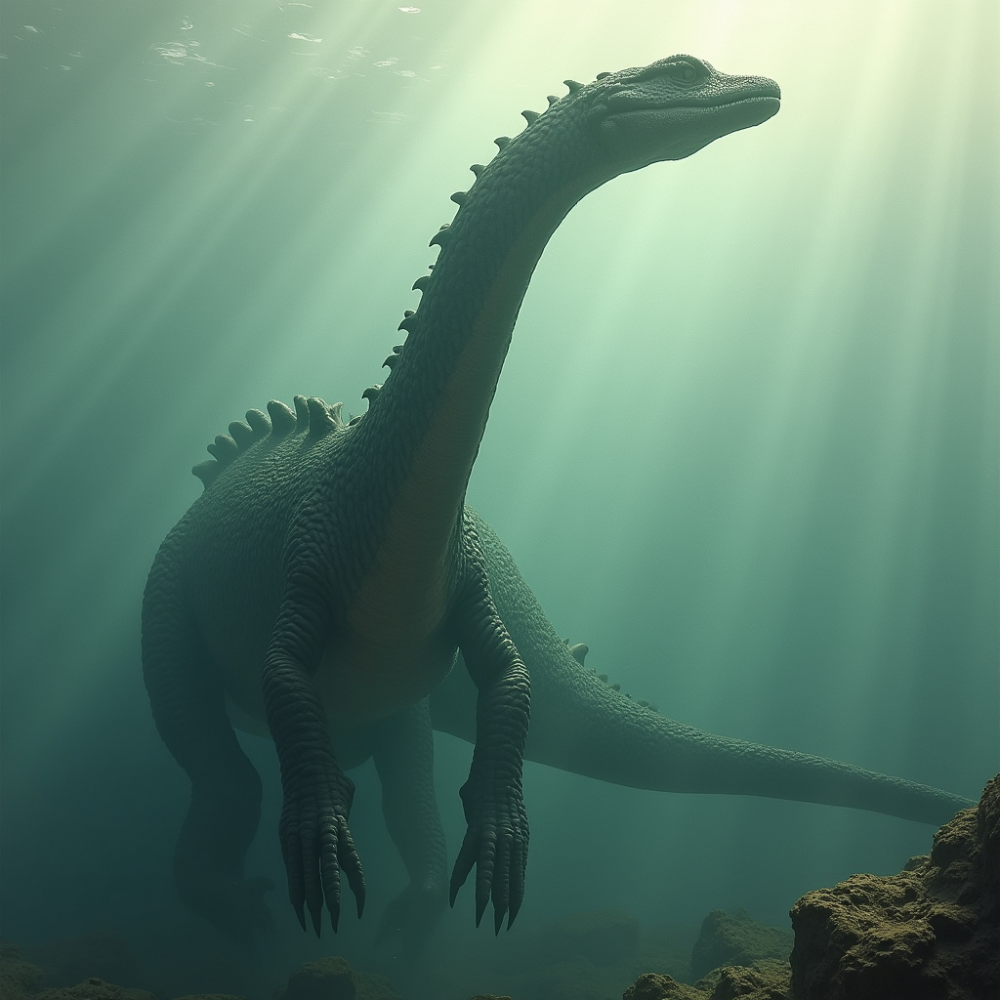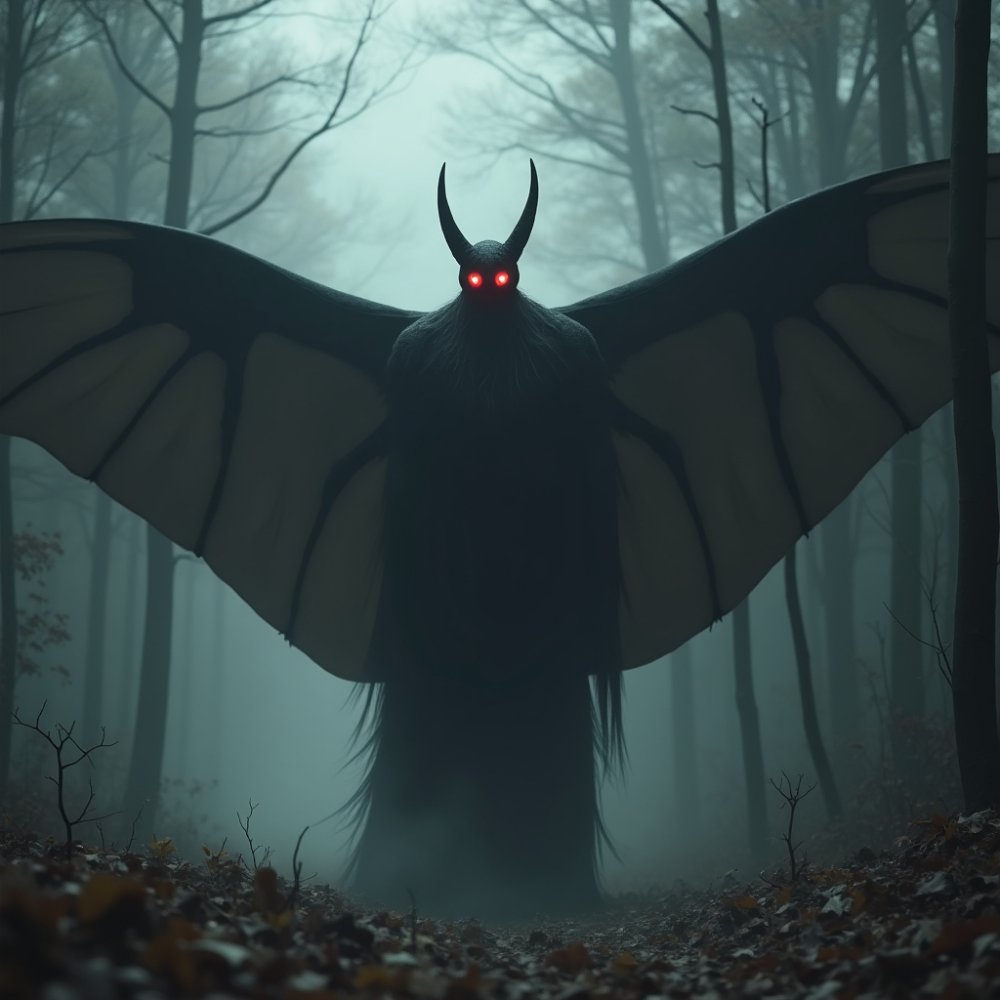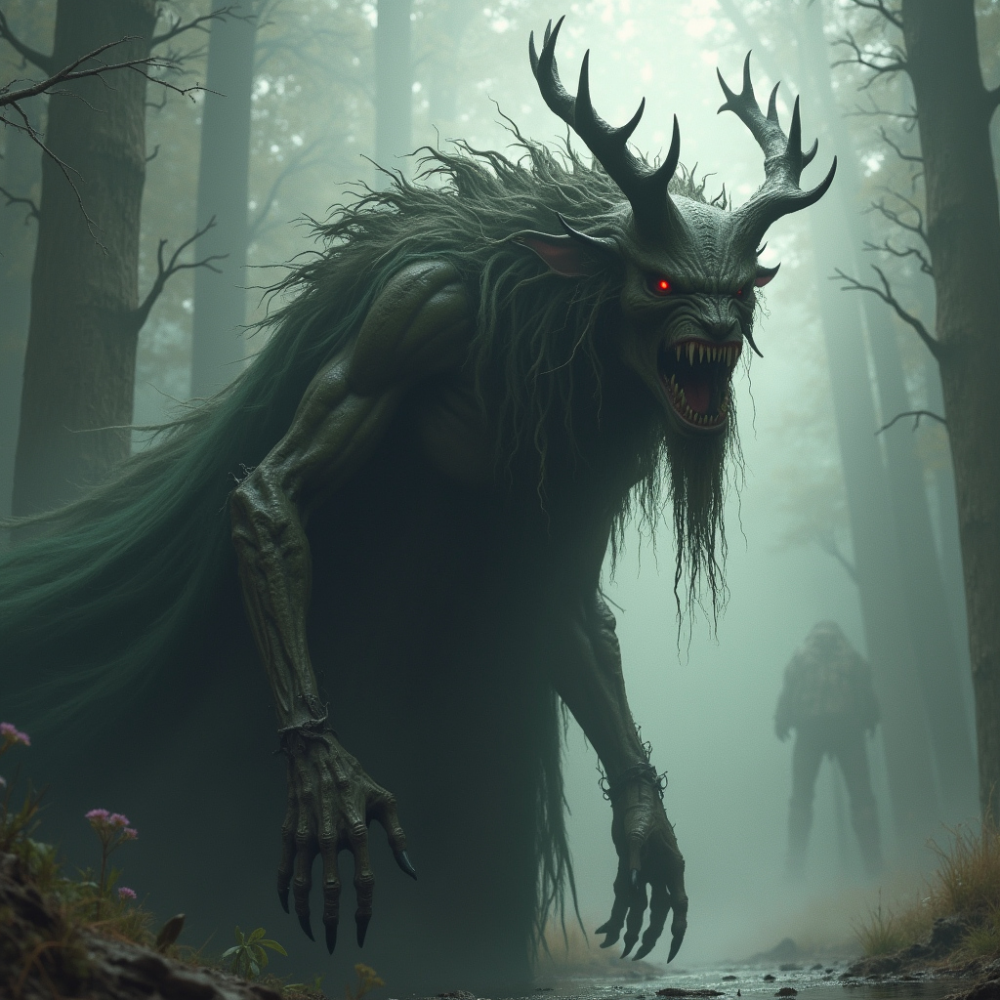Mothman Vs. Other Cryptids: How Does He Compare?
Mothman first appeared in the small town of Point Pleasant, West Virginia. The story began on November 15, 1966, when two young couples reported seeing a man-sized bird-like creature with glowing red eyes near an old TNT plant. This sighting was quickly picked up by the local paper, the Point Pleasant Register, and the nation was hooked.
Over the next year, Mothman became a local legend. Sightings continued, and the creature seemed to always be spotted near areas of disaster or misfortune. Some folks even believed Mothman was a harbinger of doom. Things took a tragic turn when the Silver Bridge collapsed in December 1967, just over a year after the first sighting. The event led many to link the Mothman sightings to the disaster, cementing the creature’s place in local lore.
DISCLOSURE:
All of my posts on this website do contain affiliate links. They will lead you to other blogs i have written about Bigfoot Stories. There are also Amazon Products links on this Blog.So If you click on any link and make a purchase, As an Amazon Associate I earn from qualifying purchases. It is also at no additional cost to you to explore these links.
To understand Mothman,
It’s helpful to know a bit about his fellow cryptids. Take Bigfoot, for example. Known also as Sasquatch, Bigfoot is a large, hairy, human-like creature spotted in the dense forests of North America and has been around in folklore for centuries. Then there’s the Jersey Devil, a bizarre creature with bat-like wings and a blood-curdling scream that’s been haunting the Pine Barrens of New Jersey since the 18th century.
Let’s not forget the Chupacabra, famous for attacking livestock and drinking their blood, and our aquatic friend, the Loch Ness Monster, usually described as a giant, prehistoric sea creature residing in Scotland’s deep waters. Each of these cryptids has its own unique lore and characteristics, making them fascinating in their own right.
By comparing Mothman to these other legendary creatures, we can start to understand what makes him so intriguing. Whether it’s the eerie timing of his appearances or the vivid descriptions from eyewitnesses, Mothman’s story has a life of its own in the world of cryptids. As we explore further, we’ll see just how he stacks up against his more well-known counterparts.
Mothman’s Impact on Local and National Culture
Point Pleasant, West Virginia,
Will forever be linked to Mothman. The sightings in the mid-60s put this small town on the map, attracting curious visitors and cryptid enthusiasts alike. The annual Mothman Festival is a testament to that lasting impact. Held every September, the festival brings together thousands of people to celebrate and explore the legend. There’s even a Mothman statue in the town—a winged, muscular figure with piercing red eyes. This kind of cultural imprint is rare, especially for a cryptid that appeared so briefly.
The media played a significant role in spreading Mothman’s legend. Shortly after the initial sightings, the story was picked up by national newspapers and TV shows, sparking debates and theories about what people had actually seen. Mothman quickly became bigger than a local phenomenon. John Keel’s 1975 book, ‘The Mothman Prophecies,’ and its 2002 film adaptation brought the story to an even wider audience, transforming Mothman into a pop-culture icon.
Bigfoot,
Though, stands in a league of his own. With roots in Native American folklore and countless reported sightings, Bigfoot has become a cultural juggernaut in North America. Documentaries, TV shows, and movies have all cashed in on Bigfoot mania. There’s even a thriving market for Bigfoot merchandise, from T-shirts to garden gnomes.
Mothman’s fame might be newer and more localized, but the impact is significant. Unlike Bigfoot, who roams vast forests supposedly unseen, Mothman’s story is tied to very specific events and places. This gives it a unique angle that continues to inspire interest and speculation. In contrast, Jersey Devil, Chupacabra, and Loch Ness Monster have all carved out their own niche areas of influence, but Mothman’s connection to Point Pleasant stands out for its intensity and focus.
Mothman’s enduring appeal isn’t just about sightings; it’s about the stories and theories that grew around them. Local legends, terrifying encounters, and mysterious disappearances contribute to a rich tapestry that captivates people even years after the fact. And that’s not something every cryptid can boast.
Physical Descriptions and Behavior of Mothman vs. Other Cryptids
Mothman
is typically described as a humanoid figure with large, reflective red eyes and expansive wings that resemble those of a gigantic moth. Witnesses often mention a sense of dread or unease when spotting him. Legend has it he stands about 7 feet tall with a wingspan reaching 10 to 12 feet, making him an imposing presence.
Bigfoot,
on the other hand, is described as a towering figure covered in shaggy hair, usually brown or dark in color. Standing between 7 to 10 feet tall, Bigfoot is known for his enormous footprints, often measuring up to 24 inches in length. Unlike Mothman, Bigfoot sightings are often accompanied by reports of guttural sounds or howls.
Enter the Jersey Devil,
with its bizarre mix of animal features. This creature is often depicted with a horse or goat-like head, small clawed arms, bat-like wings, and a forked tail. Standing between 4 to 6 feet tall, the Jersey Devil is said to move quickly and emit high-pitched, creepy screams. The creature’s unique combination of traits makes it one of the more visually terrifying cryptids out there.
The Chupacabra,
whose name translates to “goat-sucker,” is generally described as a reptile-like creature with spines along its back. Sightings often detail an animal around 3 to 4 feet tall, with a gaunt appearance and glowing red eyes, much like Mothman’s. Unlike Mothman, though, the Chupacabra is more often associated with livestock attacks than human encounters.
Finally, the Loch Ness Monster, or Nessie,
diverges significantly from the others due to her aquatic nature. Descriptions usually include a long neck, humps along the back, and a small head. Nessie is often portrayed as a plesiosaur-like creature, but sightings are usually brief and lack the consistency and level of detail found in Mothman and Bigfoot reports.
Explanations and Theories Behind the Sightings
Theories about Mothman’s origins are as diverse as the sightings themselves. The most plausible explanation suggests he’s nothing more than an out-of-migration sandhill crane or a heron. These birds have a large wingspan and can exhibit glowing eyes when light reflects off them, fitting the bill for many Mothman descriptions. Skeptics argue that mass hysteria and the power of suggestion amplified these sightings, especially in a small community like Point Pleasant.
Bigfoot, with his numerous reported sightings, has his own set of theories. Some believe he’s a relic of the past, possibly a surviving Gigantopithecus—a giant ape thought to be extinct. Others speculate he’s a manifestation of collective fears and myths, deeply embedded in folklore. There’s also the suggestion that many Bigfoot sightings are misidentified wildlife, such as bears standing on their hind legs.
The Jersey Devil’s origins are steeped in local folklore. One popular theory claims the creature is the cursed 13th child of a woman named Mother Leeds, born in the Pine Barrens of New Jersey. Skeptics, however, argue that the so-called sightings are misinterpreted encounters with local wildlife such as owls, deer, or even escaped exotic animals.
Chupacabra sightings often align with local livestock attacks, fueling theories of a vampiric creature. Biologists and skeptics usually attribute these reports to mangy dogs or coyotes. The pronounced spines and glowing eyes described in Chupacabra encounters are often seen as the result of exaggerations or hoaxes.
Nessie, the Loch Ness Monster, has perhaps the broadest range of explanations. Some suggest she’s a long-lost aquatic dinosaur, while others point to natural phenomena like floating logs, waves, and even boat wakes. There’s also a common view that most photographs and sightings are simply the product of elaborate pranks or misidentifications.
The Enduring Fascination with Mothman and Other Cryptids
People’s fascination with Mothman and other cryptids goes beyond the thrill of the unknown; it taps into deeper cultural and psychological elements. For Point Pleasant, Mothman has become an integral part of the town’s identity, drawing tourists, creating local legends, and even boosting the economy. The Mothman Museum and the Mothman Festival stand as testaments to this creature’s lasting allure.
Media plays a critical role in keeping these legends alive. Books, movies, TV shows, and internet forums keep the stories fresh and engaging for new generations. True or not, the tales provide a sense of adventure and mystery that many find irresistible. Plus, they often serve as a backdrop for exploring human fears and societal issues, adding layers of relevancy.
Compare this with Bigfoot,
whose mystique extends over vast regions in North America. His legend is ever-looming in popular culture, regularly featured in documentaries, podcasts, and big-screen adaptations. The Bigfoot community is vibrant, often hosting conventions and expeditions to find this elusive giant. The shared experience of the hunt for Bigfoot builds a unique sense of community and ongoing intrigue.
The Jersey Devil and Chupacabra both command their own sets of followers. Each has localized events and devoted researchers trying to find proof of these creatures’ existence. While not as commercially big as Bigfoot, the Jersey Devil adds a twist of old-world folklore, while Chupacabra adds a touch of eerie modern folklore to the mix.
Nessie remains a beloved figure in Scotland,
drawing visitors from around the world to Loch Ness. Despite advancements in technology and numerous scientific investigations, Nessie remains delightfully elusive, ensuring her place in the cryptid hall of fame.
At their core, these legends capture our imagination and offer an escape from the mundane. Whether it’s attending a local festival, diving into an internet wormhole of sightings, or embarking on a real-life expedition, the allure of finding something extraordinary keeps these stories alive. And as long as curiosity exists, Mothman and his cryptid cousins will continue to captivate and inspire.
Here is a great blog about : Mythological Creatures Myth And Folklore

